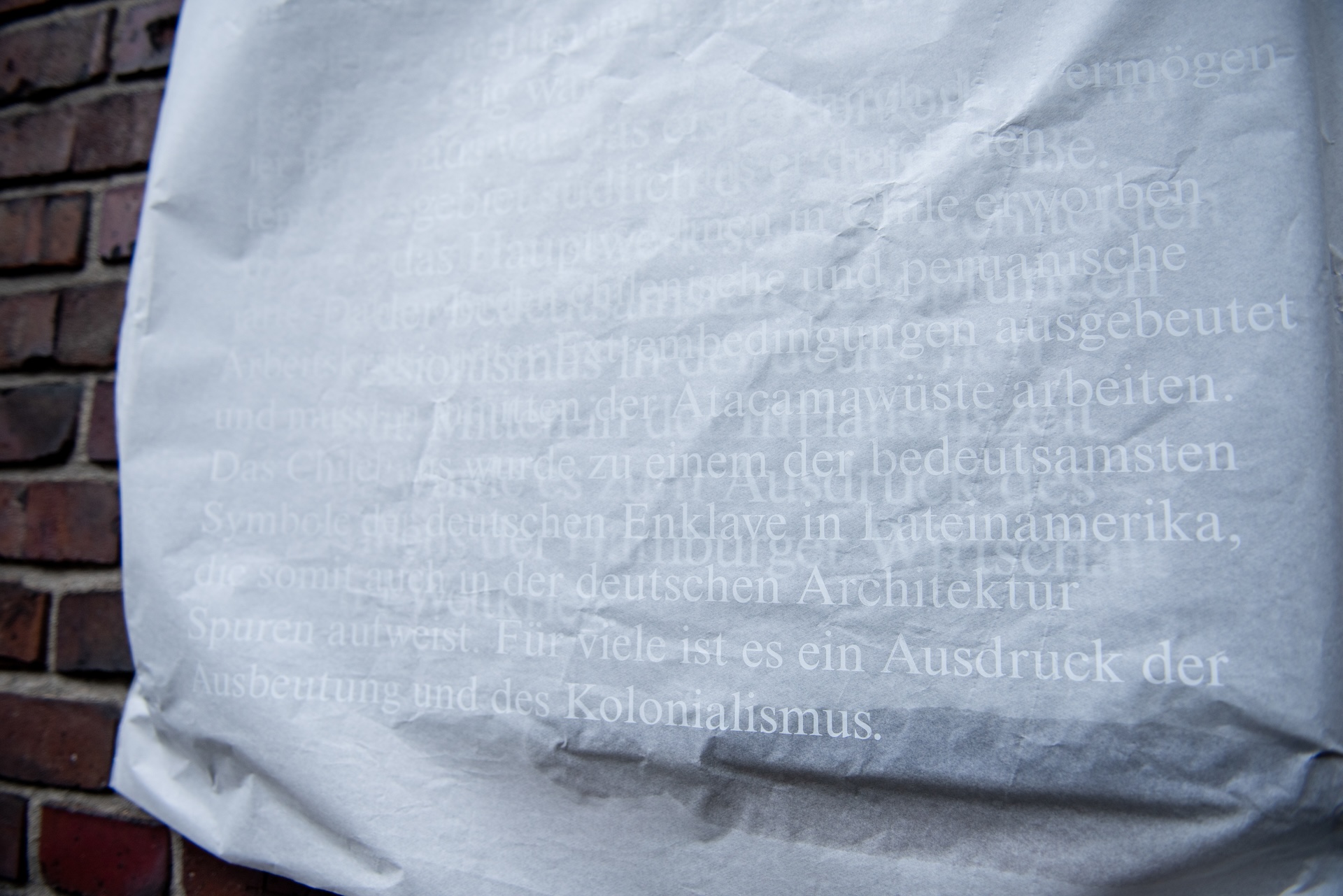The City of Hamburg and
the Afterlife of
Colonialism
Installation
Hamburger Bahnhof Berlin, 2022
Hamburger Bahnhof Berlin, 2022
In the city of Hamburg, one can discover not only traces of the former colonial metropolis, but also traces of thought patterns that still exist, which have survived and have not ceased to exist - the «coloniality of power» (Aníbal Quijano). Part of these structures can be found - along with the representations of the last century, which are now part of the cultural heritage - in the forms of selective remembrance and conscious forgetting of history, which the city’s plaques of the cultural monuments (Kulturdenkmaltafel) recount.
The «blue plaques» initially try to give a first historical impression of the architecture of Hamburg’s cultural monuments. However, these plaques decide, depending on the building, what kind of memory may be illustrated. To give an example, in the case of buildings with a complicated colonial past, such as the Chile, Africa and Asia House, the colonial part of the past is not mentioned at all. Instead, a memory without memory is created out of the diplomatic formality of selective remembering. The installation «The City of Hamburg and its Afterlife of Colonialism» rewrites this forgotten memory by appropriating the institutional formality. It makes the forgotten both present and visible by showing the colonial traces in the context of other images and reflecting the constructed representations, as a visual form of «acting» (Aby Warburg).
The installation consists of two constructions of site fences that function as two interconnected plaques, forming a visual constellation based on the narratives of representation from institutions (left side) and private spaces (right side) that can bedescribed as «the afterlife of colonialism».
The «blue plaques» initially try to give a first historical impression of the architecture of Hamburg’s cultural monuments. However, these plaques decide, depending on the building, what kind of memory may be illustrated. To give an example, in the case of buildings with a complicated colonial past, such as the Chile, Africa and Asia House, the colonial part of the past is not mentioned at all. Instead, a memory without memory is created out of the diplomatic formality of selective remembering. The installation «The City of Hamburg and its Afterlife of Colonialism» rewrites this forgotten memory by appropriating the institutional formality. It makes the forgotten both present and visible by showing the colonial traces in the context of other images and reflecting the constructed representations, as a visual form of «acting» (Aby Warburg).
The installation consists of two constructions of site fences that function as two interconnected plaques, forming a visual constellation based on the narratives of representation from institutions (left side) and private spaces (right side) that can bedescribed as «the afterlife of colonialism».



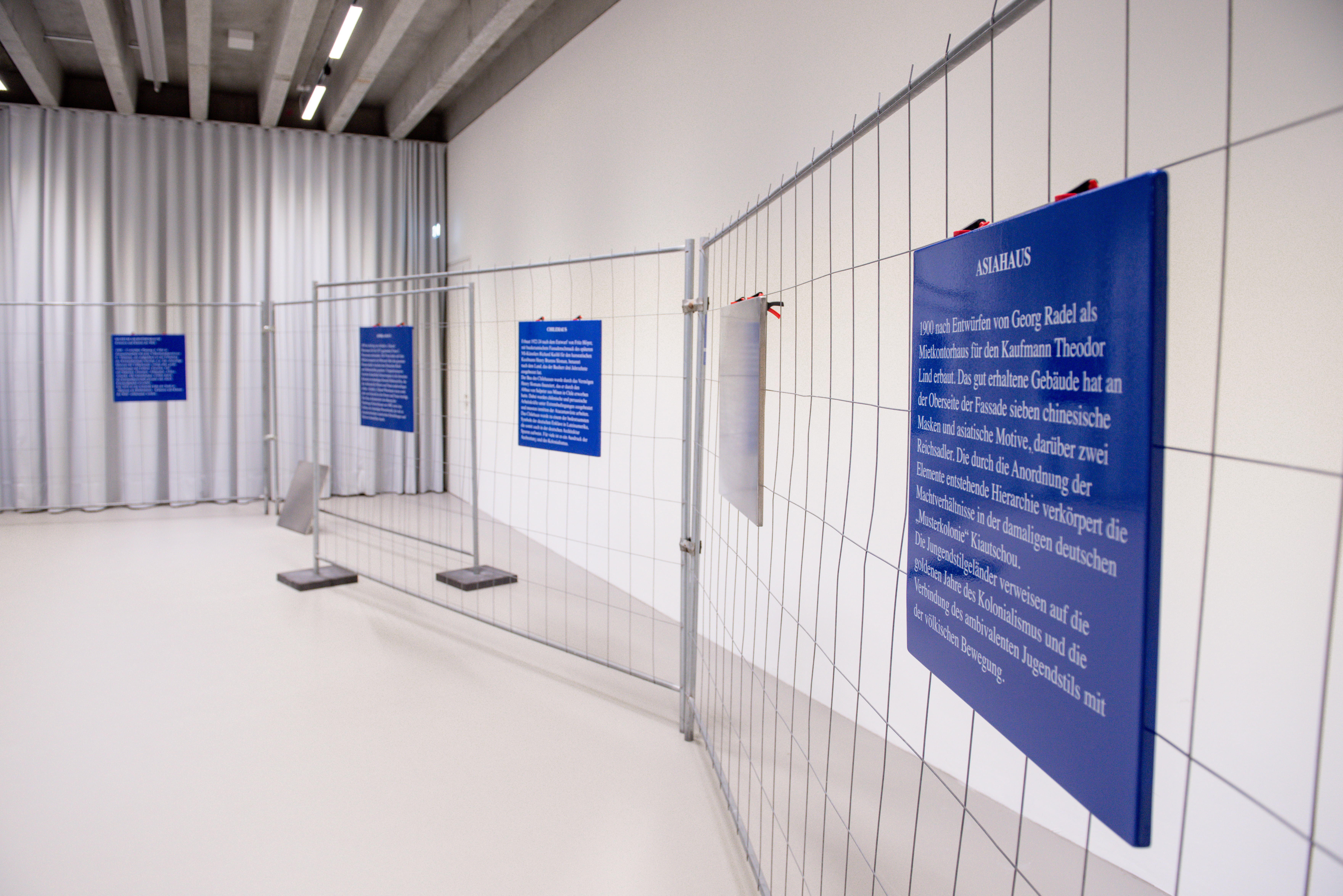

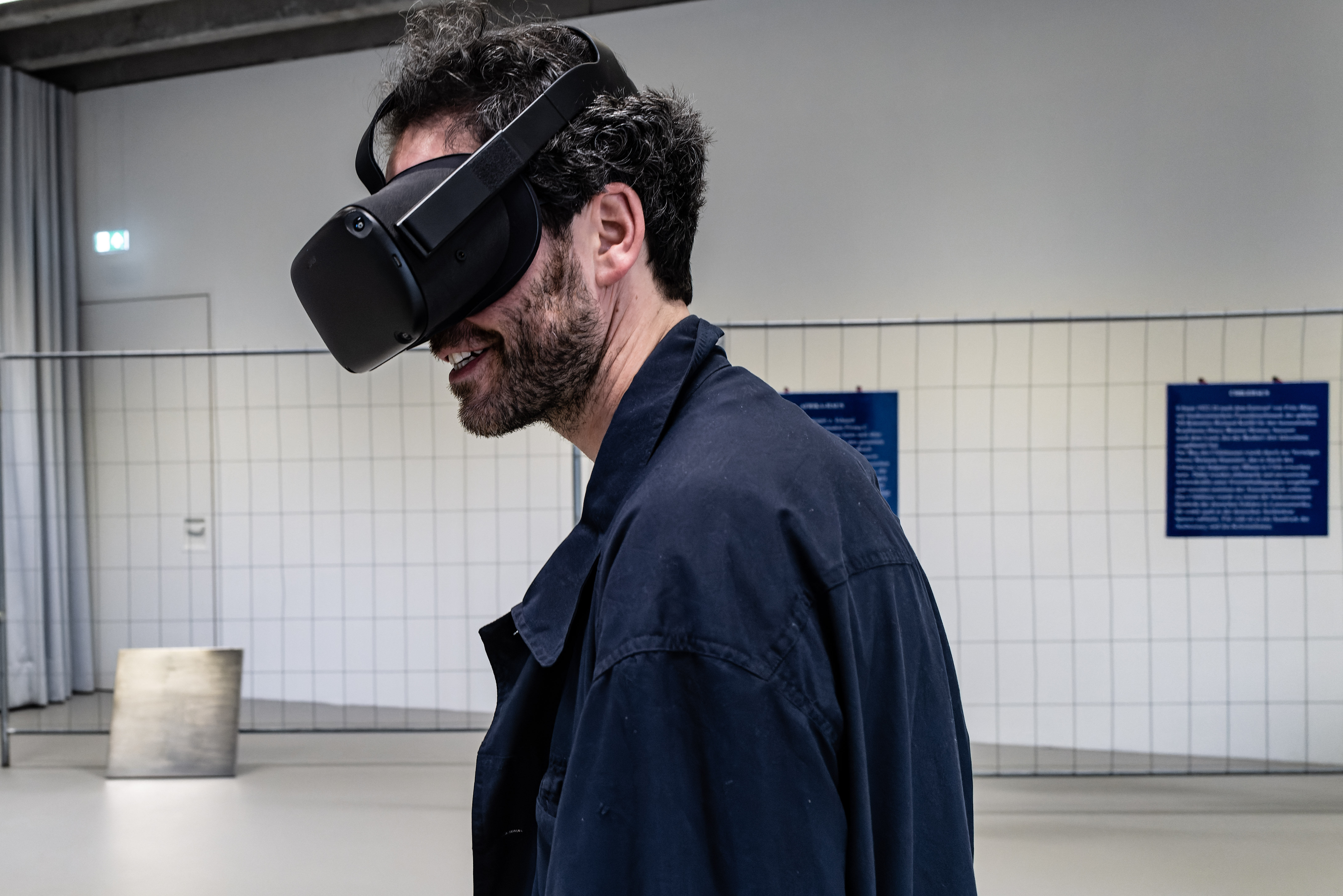
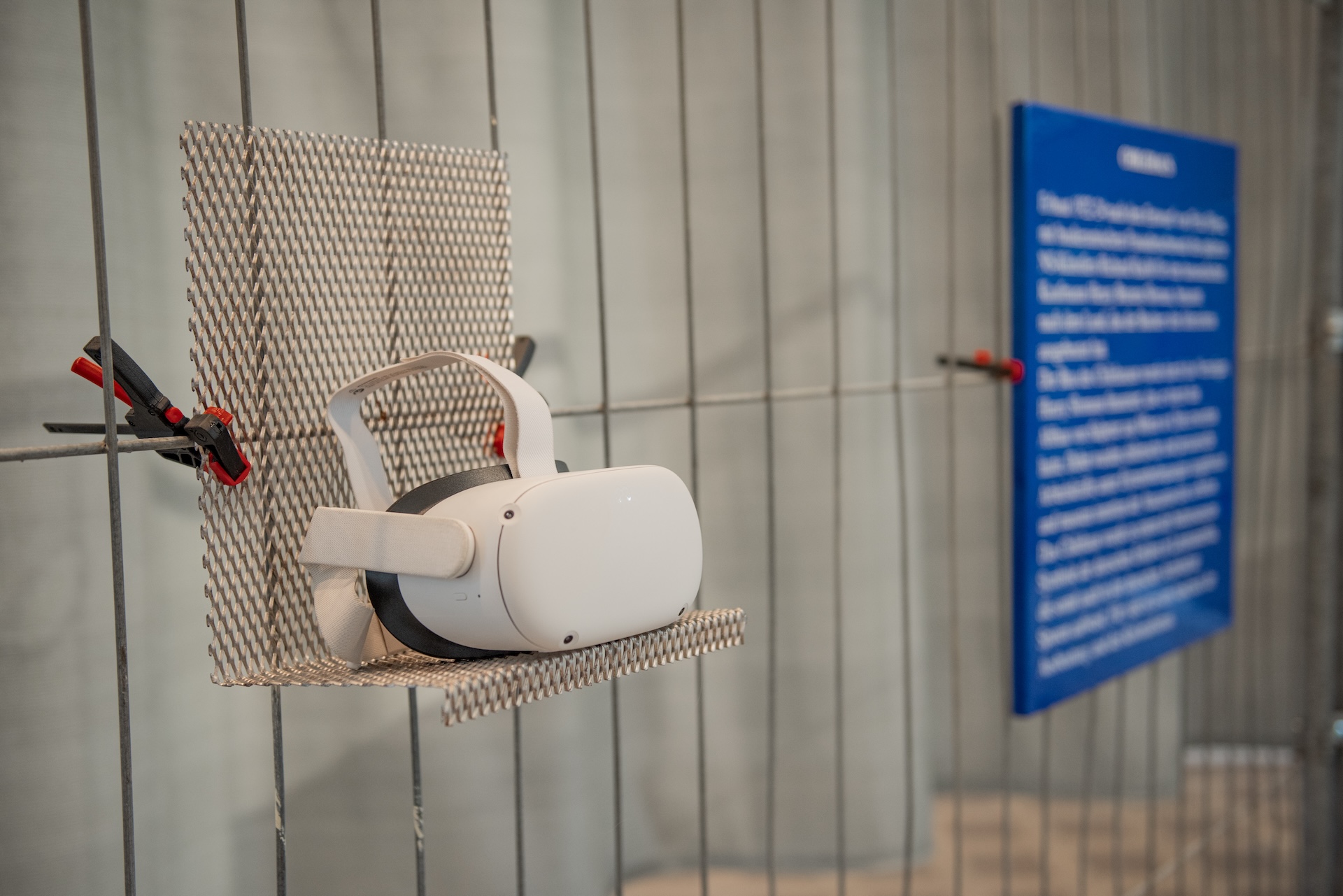
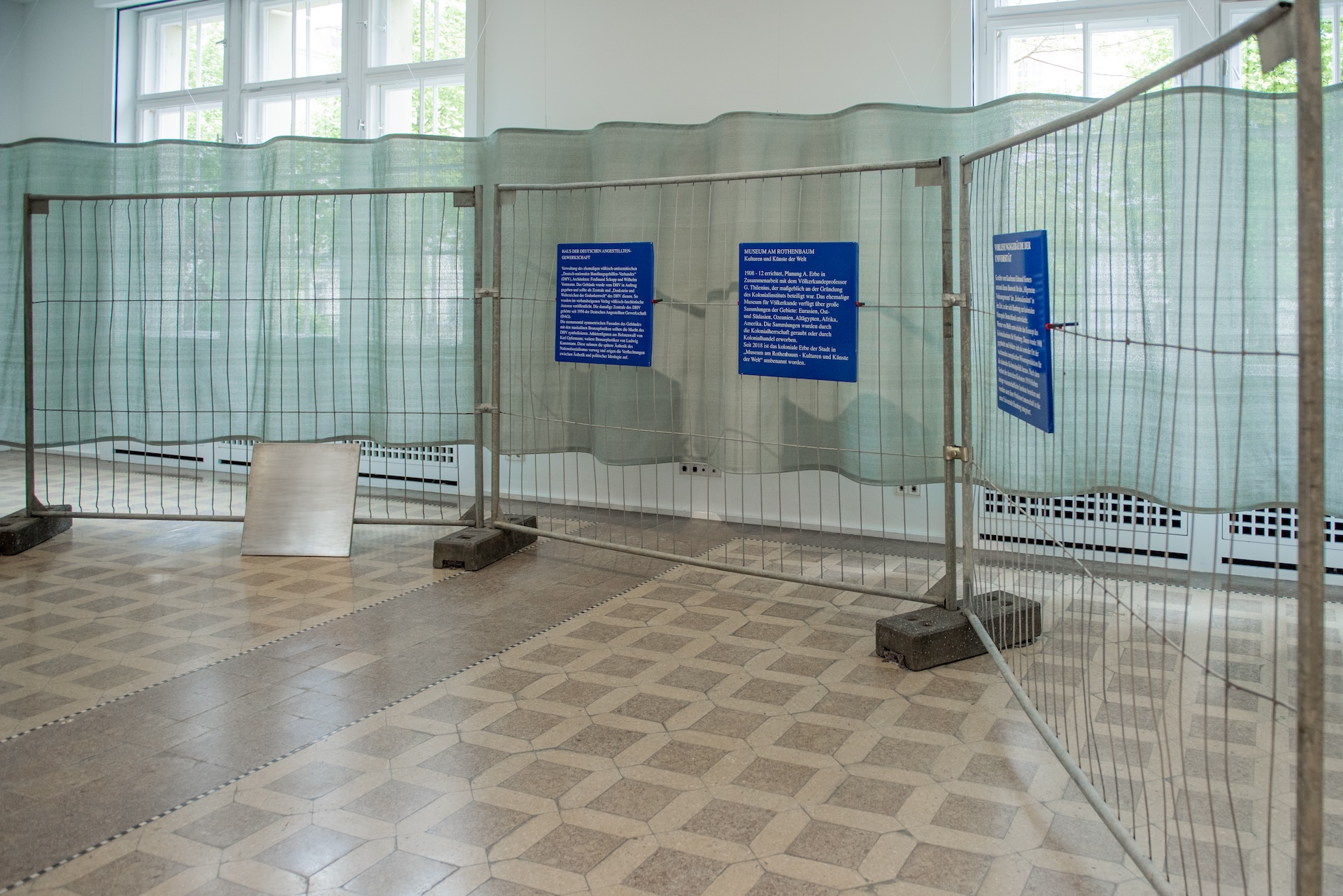
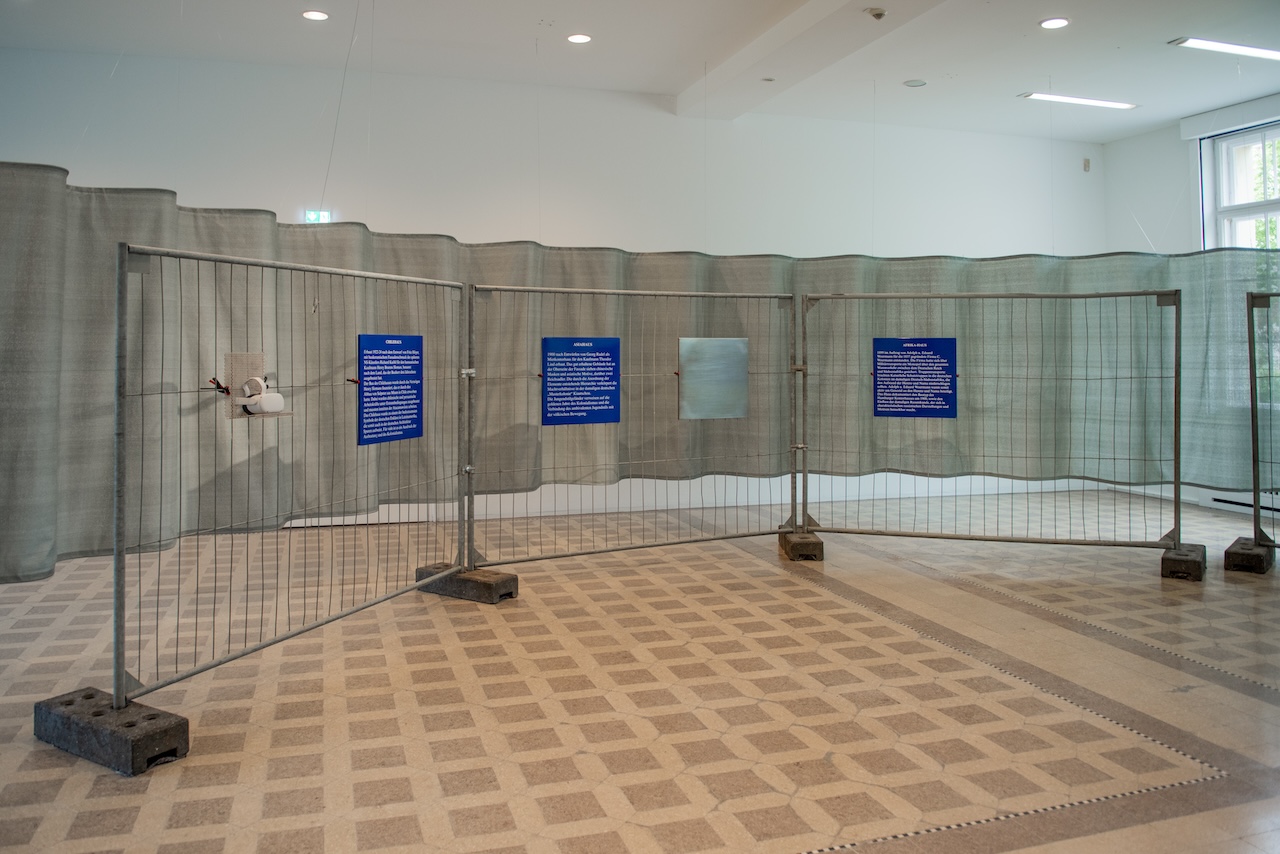

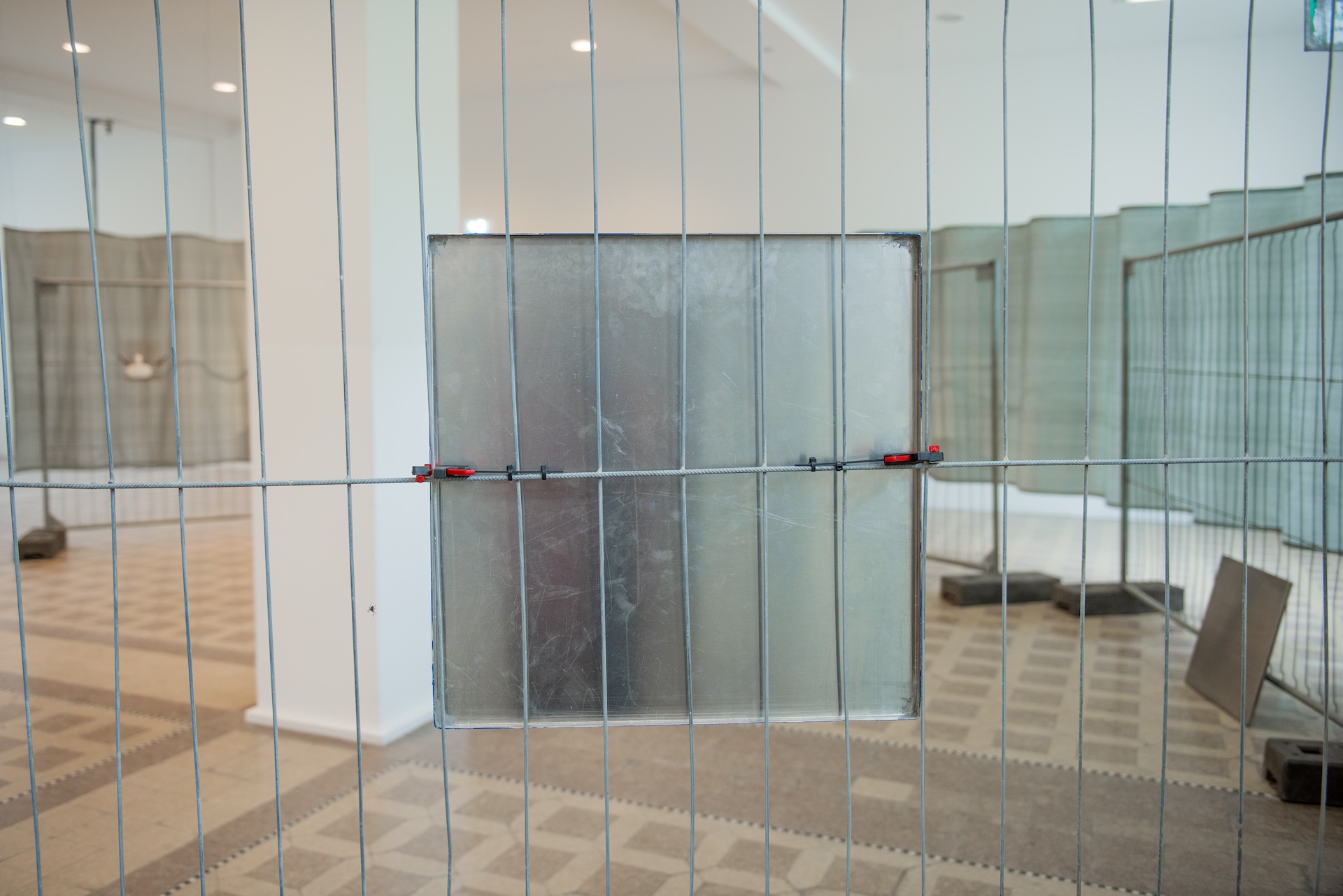
Intervention &
City Walk
City Walk
2021 - Today
In the intervention, the plaques of the cultural monuments (Kulturdenkmaltafeln) are overlaid with silk-screen printed tissue paper. The formulated historical counter-narrative on the tissue paper illuminates the colonial past of the institutions, which are not to be found on the official cultural monument plaques because, due to the diplomatic formality of selective remembering, only certain memories find a place in the public space, while other memories are left out and suppressed because they are not supposed to be present as memories in public consciousness. By superimposing the narratives on the «blue plaques» through the semi-transparent tissue paper, both narratives become visible and the conflict between the two disparate narratives is made evident. In this way, both exist in the same space despite their disparity.
